
and New
2022/2023 SEASON
27 – 29, 2023
Marsalis
World
April
Completely engaged. That’s how Joe Coyle feels about his life at Judson Manor.
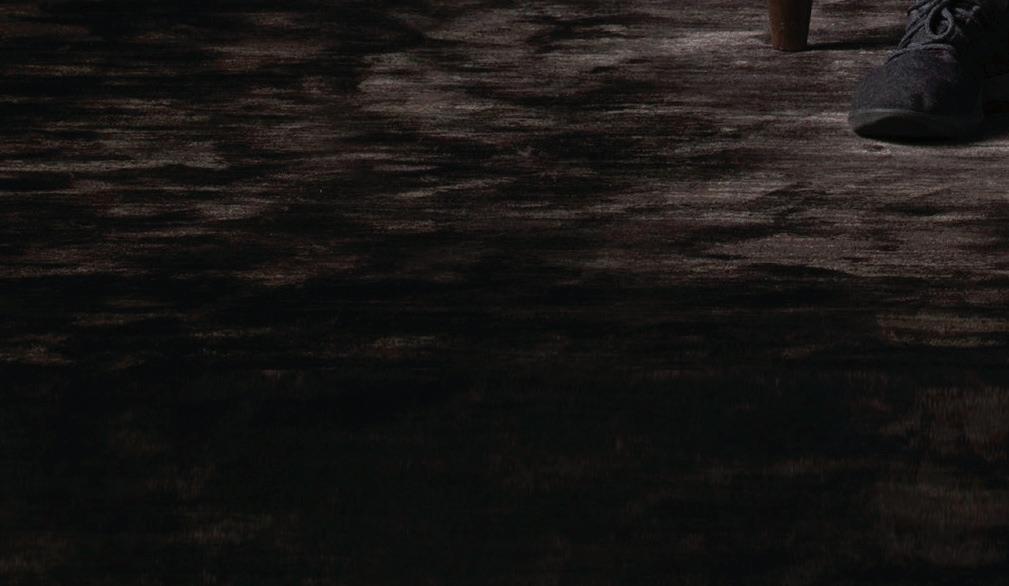

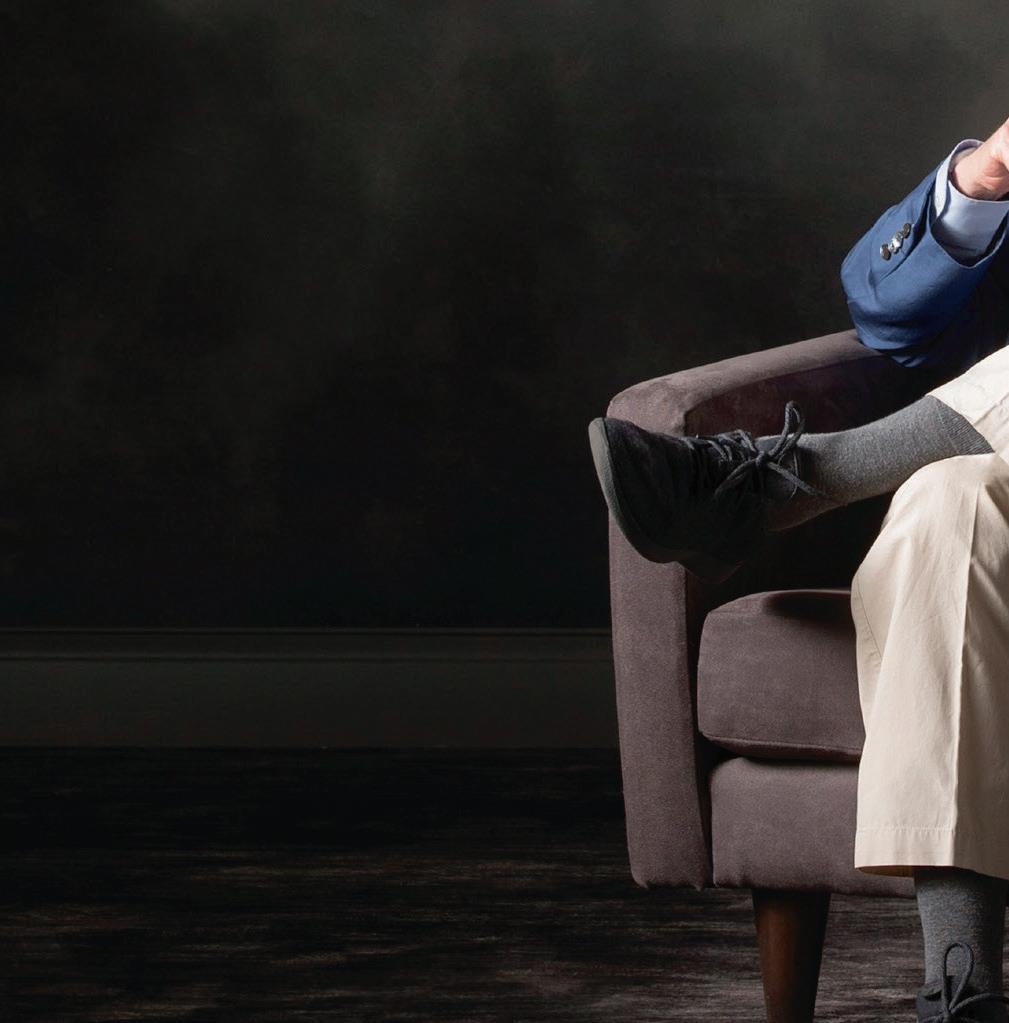

An award-winning journalist who has lived in Paris, Santa Fe, and New York City, he arrived in July 2020 via the suggestion of a fellow resident. He’s been delighted ever since.
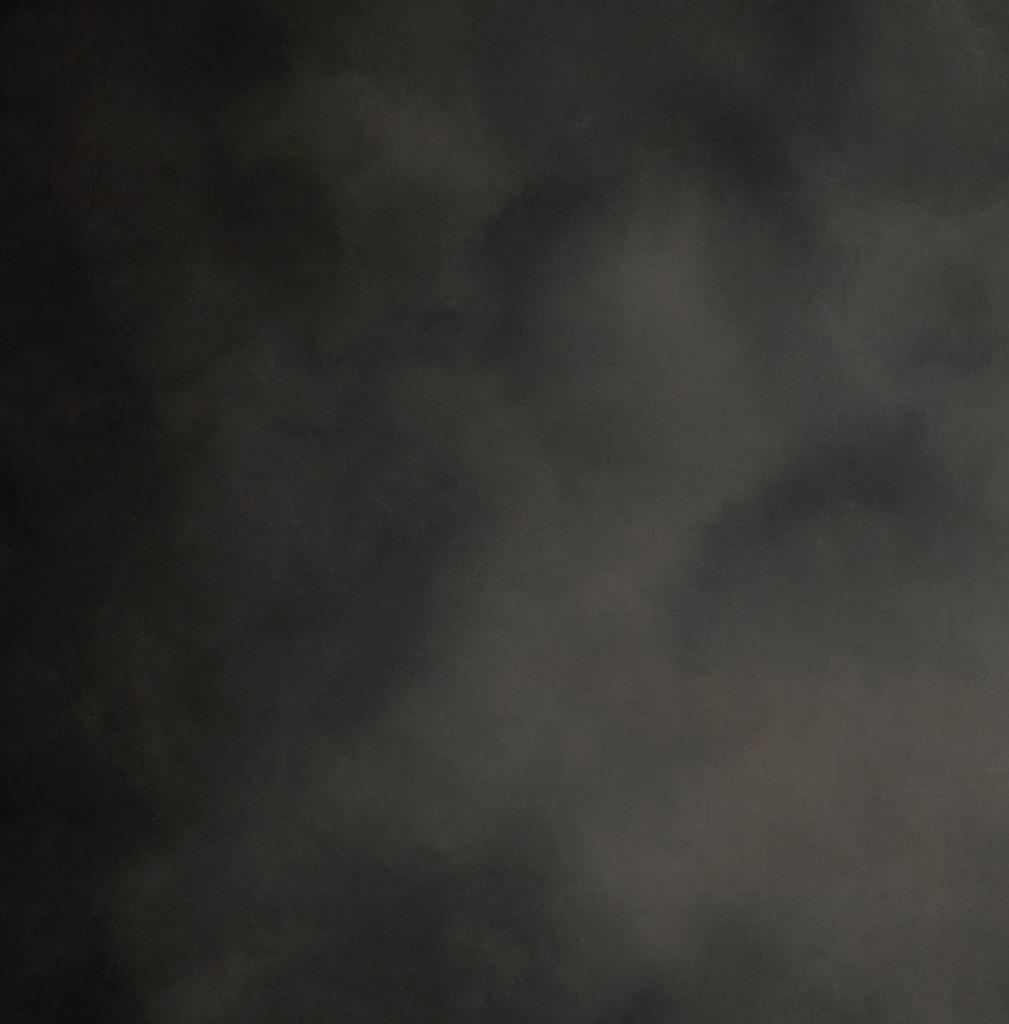
“As a writer, I enjoy spending time alone, and these surroundings are perfect: my apartment is quiet, and the views overlooking the Cleveland Museum of Art are lovely. But by far the best part of Judson is the people. Everyone is so knowledgeable about art and culture. I wanted to have stimulating company to spend my time with, and I’ve found that here. These are wonderful, interesting people,” says Joe.
Read the full story at judsonsmartliving.org/blog
Judson Park Cleveland Heights | Judson Manor University Circle | South Franklin Circle Chagrin Falls Learn more about how Judson can bring your retirement years to life! judsonsmartliving.org | 216.446.1579
“Expanding my curiosity about life is what it’s all about.”
Joe Coyle
Season’s end marks your last chance to support the magical, musical moments you love. Community support makes every moment on stage possible. You make our Orchestra great.

Play your part — make your donation today!
clevelandorchestra.com/give

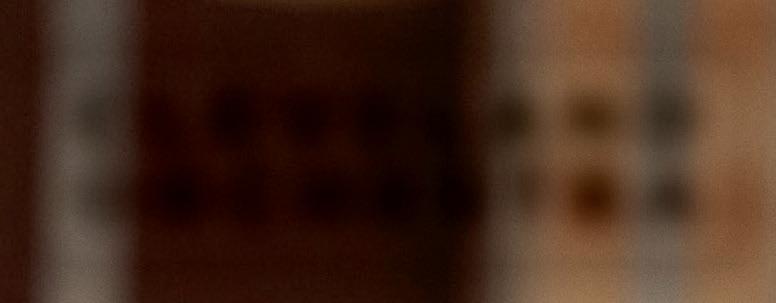



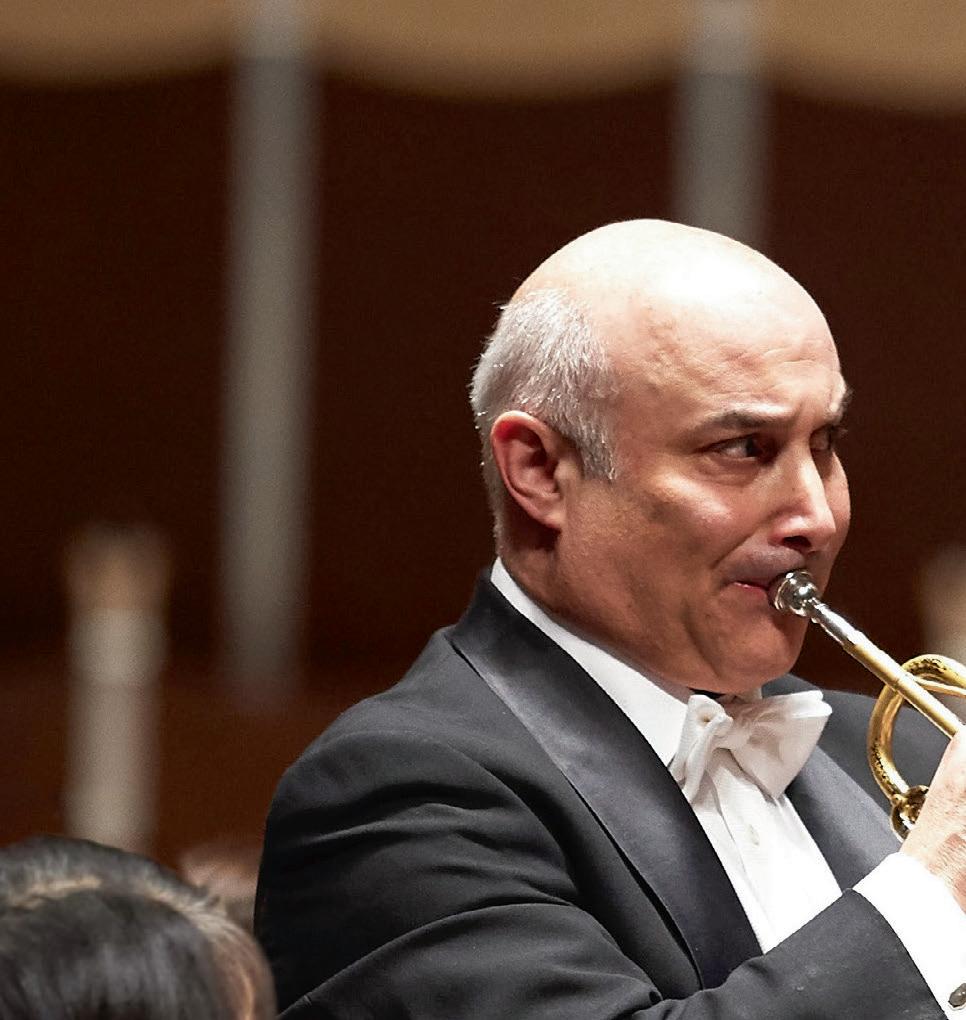
“This orchestra’s music is only possible with our incredible community of supporters.”
— Michael Sachs
Principal Trumpet, Robert and Eunice Podis Weiskopf Chair
Principal Cornet, Mary Elizabeth and G. Robert Klein Chair
Frantz

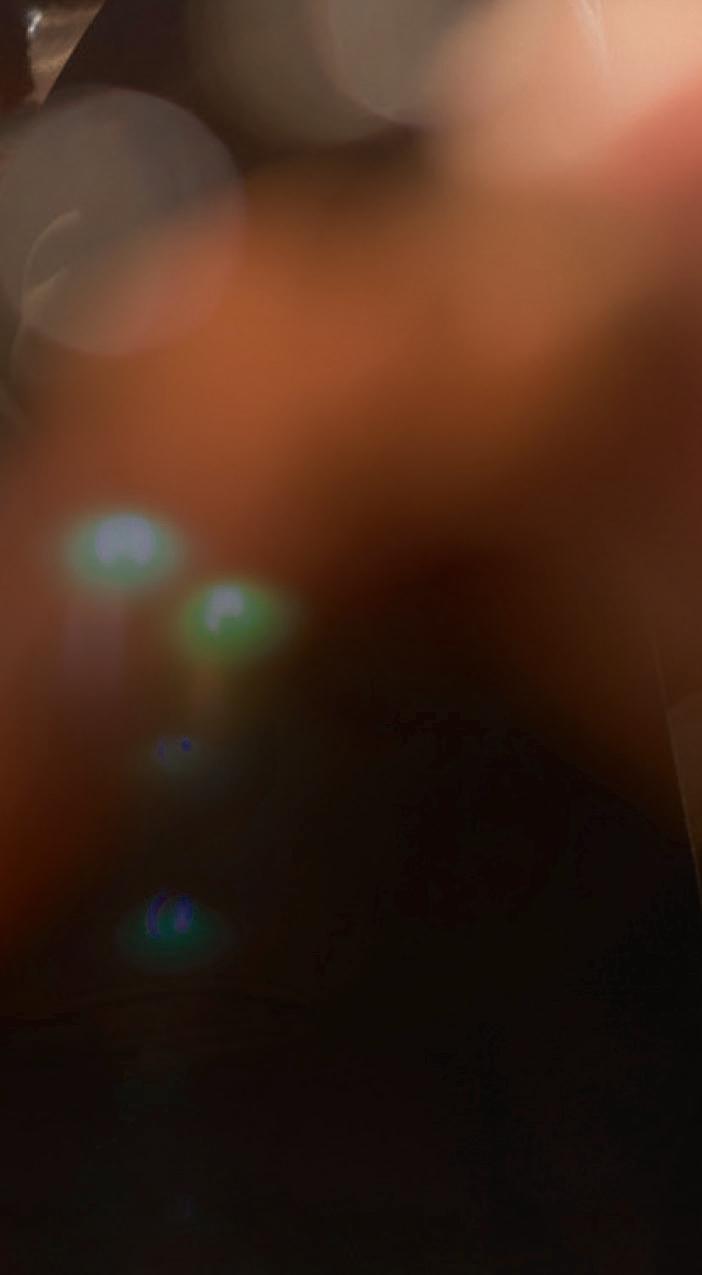




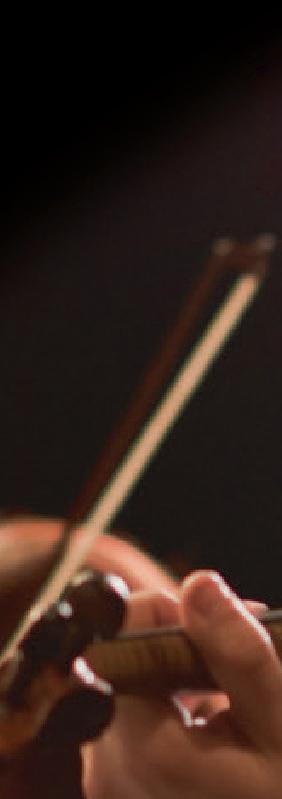

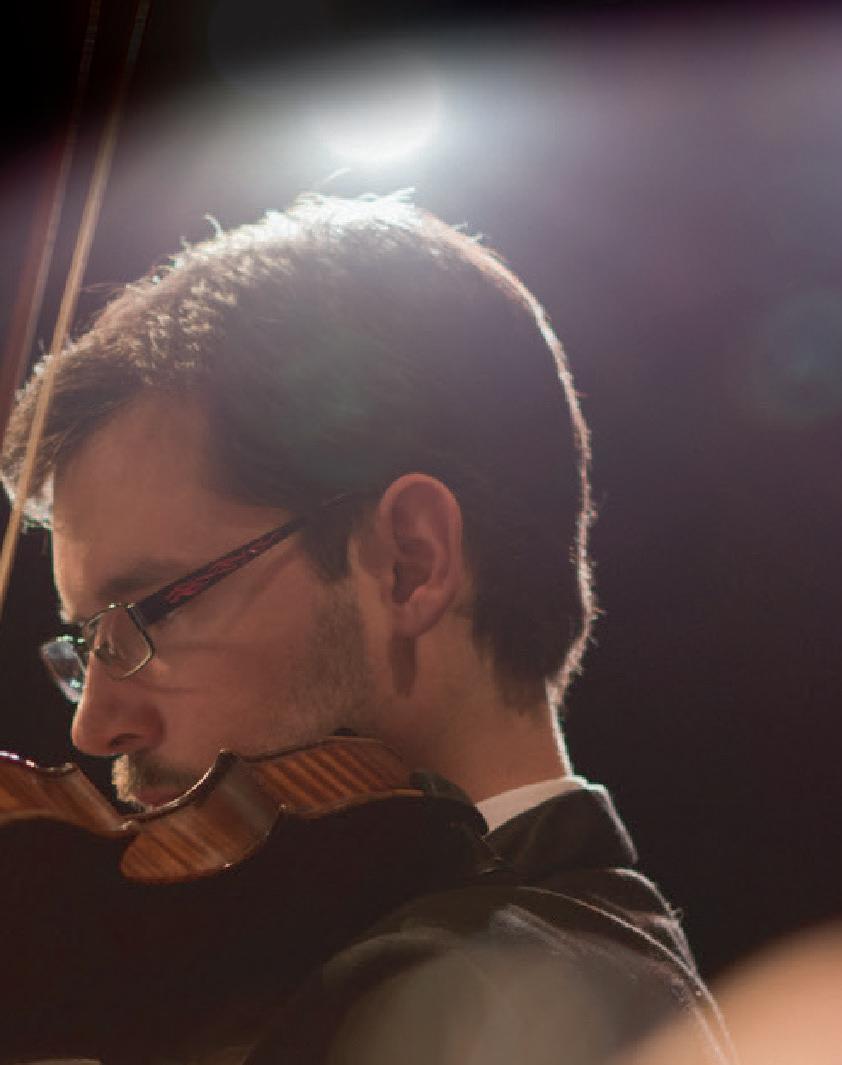




Ward is proud to continue its support for The Cleveland Orchestra. Love Your Law Firm TM FrantzWard.com
2022/2023 SEASON
Marsalis and New World
Thursday, April 27, 2023, at 7:30 p.m.
Friday, April 28, 2023, at 7:30 p.m.
Saturday, April 29, 2023, at 8:00 p.m.
Franz Welser-Möst, conductor
Julius Eastman (1940–1990)
Wynton Marsalis (b. 1961)
Symphony No. 2, “The Faithful Friend: 15 minutes The Lover Friend’s Love for the Beloved”
Concerto for Trumpet 35 minutes
I. March
II. Ballad
III. Mexican Son
IV. Blues
V. French Pastoral (Flowing Waltz)
VI. Harlequin Two-Step
Michael Sachs, trumpet
World Premiere, Cleveland Orchestra co-commission
INTERMISSION 20 minutes
This weekend’s concerts are sponsored by Frantz Ward LLP. The Cleveland Orchestra’s commission of the Wynton Marsalis Concerto for Trumpet is generously sponsored by Ken Fitzgerald and Ruby Carr.
Thursday evening’s concert is dedicated to The Honorable John Doyle Ong in recognition of his extraordinary generosity in support of The Cleveland Orchestra.
THE CLEVELAND ORCHESTRA | 3 clevelandorchestra.com
ON NEXT PAGE ΩΩΩ
PROGRAM CONTINUED
COVER: PHOTO BY
JACK, JOSEPH AND MORTON MANDEL CONCERT HALL AT SEVERANCE MUSIC CENTER
ROGER MASTROIANNI
2022/2023 Season Sponsor
Dvořák (1841–1904)
Antonín
Symphony No. 9 in E minor, 40 minutes
“From the New World,” Opus 95
I. Adagio — Allegro
II. Largo
III. Molto vivace
IV. Allegro con fuoco
Total approximate running time: 1 hour 50 minutes
Thank you for silencing your electronic devices.
RENÉE FLEMING

A ONCE-IN-A-LIFETIME OPPORTUNITY TO HEAR TWO CLASSICAL MUSIC SUPERSTARS TOGETHER IN A PROGRAM OF SONGS BY RACHMANINOFF AND SOLO PIANO WORKS BY LISZT.
SATURDAY, MAY 27 • 8 PM
CHENERY AUDITORIUM, KALAMAZOO
TICKETS START AT $40 THEGILMORE.ORG
4 | 2022/2023 SEASON
EVGENY KISSIN
ΩΩΩ PR OGRAM CONTINUED
Symphony No. 2, “The Faithful Friend: The Lover Friend’s Love for the Beloved”
By Julius Eastman
BORN : October 27, 1940, in New York City
DIED: May 28, 1990, in Buffalo, NY
Ω COMPOSED : 1983
Ω WORLD PREMIERE: November 20, 2018, with Luciano Chessa leading the Mannes Orchestra at Alice Tully Hall in New York City
Ω CLEVELAND ORCHESTRA PREMIERE: This weekend’s performances mark the first presentations of Julius Eastman’s Symphony No. 2 by The Cleveland Orchestra.
Ω ORCHESTRATION: 3 flutes, 2 oboes, 2 english horns, 3 bass clarinets, 3 contrabass clarinets, 3 bassoons, 3 contrabassoons, 2 trombones, bass trombone, 3 tubas, 4 timpani, and strings
Ω DURATION: about 15 minutes
IT’S NOT EVERY DAY that you find the handwritten score of a symphony in the bottom of a trunk that belonged to a famous composer’s former lover. But when composer, scholar, and performer Mary Jane Leach was able to confirm that the Second Symphony was, indeed, a composition by Julius Eastman, she got to work. A contemporary of his who had worked with Eastman in the 1980s, Leach had spent years collecting scores and audio, and trying to record his music for the public to finally hear. She understood what the musical world is finally beginning to embrace: Julius Eastman was, in his prime, a brilliant and deeply affective composer, a man light-years ahead of his time. But Julius Eastman —
like Mozart, Bach, and other composers the public now heralds as geniuses — had fallen into obscurity by the time of his death. Only eight months after he died did a notice appear in any newspaper or media outlet.
Born in New York City and raised in Ithaca, New York, Eastman was a student at the Curtis Institute of Music in Philadelphia before joining a vibrant new-music scene at SUNY Buffalo under the helm of composer and conductor Lukas Foss. There, he began composing experimental works such as Thruway (1970) and Macle (1971), often turning to pop music and jazz for harmonic language and melodic styles. Early on, his works demonstrated a capacity to shock, awe, and thrill. In
THE CLEVELAND ORCHESTRA | 5 clevelandorchestra.com
THE MUSIC

6 | 2022/2023 SEASON
THE MUSIC
PHOTO BY DONALD W. BURKHARDT
Macle, for example, vocalists faithfully chant “take heart” (the mantra of the work) even over the sounds of occasional screams and electronic buzzing. In Eastman’s sprawling, joyous, 70-minute work, Femenine (1974) — which premiered before Steve Reich’s Music for 18 Musicians and Philip Glass’s Music in 12 Parts— sleigh bells chime, marimbas shimmer, and pianos arpeggiate glorious, golden chords as bright as a sunrise.
Eastman defied the world of experimental music in the 1970s from the beginning. He was a Minimalist composer before we came to associate that genre of music with straight white men such as Reich, Glass, and Terry Riley. He experimented with avant-garde techniques and mixing genres 15 years before composers in New York and elsewhere took on similar work under the maxim of Post-Minimalism.
If Julius Eastman was musically progressive, his identity as an unapologetically out Black gay man was equally radical in some circles in the 1970s. “What I am trying to achieve is to be what I am to the fullest,” Eastman remarked in a 1976 interview. “Black to the fullest, a musician to the fullest, a homosexual to the fullest.” It may appear to some that each of those categories exists independently of the others, but to Eastman, they were all necessary components of his identity that could not be separated — nor did he wish for them to be.
The 1969 Stonewall rebellion was still fresh in people’s minds when Eastman came into his own as a composer. So was the assassination of Martin Luther King, Jr. in 1968. Both of those events were important markers that highlighted and suppressed Eastman’s experiences. New York’s queer cultural scene was predominantly white — and occasionally hostile to Black men like him. Leaders of the Black Civil Rights struggle of the 1950s and 60s often expressed ambivalence about their queer brethren.
For Eastman, however, both components of his identity were necessary to his life and musical works — as explicit, confrontive, and provocative titles such as Nigger Faggot (1978) attest. He wished to accost the listener with the social categories that he experienced as a Black gay man — categories that he was also proud of, even as others sought to condemn him for them. For these reasons, musicologist Ellie Hisama writes, we must understand Eastman’s work “as a black, gay man who worked in a primarily white new music scene… with respect to both of these social categories, rather than to disregard them within a ‘post-race or sexuality-neutral context.’”
Unfortunately, by the 1980s, Eastman’s life had begun to fall apart. Unable to secure a permanent faculty appointment and on bad terms with his family after his grandmother died, he became difficult to locate, residing either outdoors or in homeless shelters or most likely both. He was evicted from apartments, drifted in and out of family homes, and became
THE CLEVELAND ORCHESTRA | 7 clevelandorchestra.com
Julius Eastman was, in his prime, a brilliant and deeply affective composer, light-years ahead of his time.
a fixture at Tompkins Square Park in New York City. Suffering from mental illness and drug addiction, he died in a Buffalo hospital in 1990 from cardiac arrest at the age of 49.
Eastman’s Second Symphony (1983), a dedication to his former lover and a chronicle of their failed relationship, is an example of the musical bravery and deep affect that Eastman is known for expressing. It is a large, challenging work for any orchestra to wrestle with. Requiring 100 musicians for a piece of music that can take anywhere from 12 to 20 minutes to perform, the original score boasts three bassoons, three double-bass (or contra) bassoons, three bass clarinets, six timpani (this weekend’s performances reduce it to four), three double-bass (or contrabass) clarinets, and three tubas, among other features. The more difficult challenge for the ensemble, however, is to figure out how to wrangle everyone together to perform a work that offers opportunities for asynchronous and improvisatory music-making while ensuring that they also perform together in time at the right moments for certain musical phrases or cadences.
The symphony begins with proclamations of love but ends in failure. As the conductor, musicologist, and editor of Eastman’s score Luciano Chessa stated in an interview, “[The] symphony ends with a lot of loose ends, it was all by design. So I was not going to put in a final cadence or something! The piece is finished, as what it was supposed to be.” The strings begin in unison, quickly
swelling the orchestra, bringing in the brass and timpani to dramatic effect. The symphony itself is a mix of droning with articulated musical phrases that prod at the ear, encouraging mourning, building up slowly in thickness and richness in its orchestration. It reaches an intense, dramatic apex roughly two-thirds into the work, where the strings, brass, and percussion wail out their grief. The ending, however, is mute and subdued, with the woodwinds gloomily and moodily thrumming out the last few notes.
In Eastman’s inscription of the work, he writes, “On Tuesday, Main and Chestnut at 19 o’clock, The Faithful Friend and his Beloved Friend decided to meet. On Monday the day before, Christ came, just as it was foretold. Some went up on the right, and some went down on the left. Trumpets did sound (a little sharp), and electric violins did play (a little flat). A most terrible sound. And in the twinkling of an eye the Earth vanished and was no more. But on Tuesday, the day after on Main and Chestnut at 19 o’clock, there stood the Lover Friend and his Beloved Friend, just as they had planned, embracing one another.”
The ending of the symphony portrays just that: two former lovers, standing in darkness, grieving from heartbreak, unsure of what, exactly, comes next.
— Kira Thurman
Kira Thurman is Associate Professor of History, Germanic Studies, and Musicology at the University of Michigan, a founder of blackcentraleurope.com, and author of the award-winning book Singing Like Germans: Black Musicians in the Land of Bach, Beethoven, and Brahms
8 | 2022/2023 SEASON THE MUSIC
Concerto for Trumpet
By Wynton Marsalis
BORN : October 18, 1961, in New Orleans
Ω COMPOSED : 2023
Ω WORLD PREMIERE: This weekend’s concerts mark the world premiere performances of Wynton Marsalis’s Concerto for Trumpet, co-commissioned by The Cleveland Orchestra, Verbier Festival, and London Symphony Orchestra.
Ω ORCHESTRATION: 2 flutes (2nd doubling piccolo), 2 oboes, english horn, 2 clarinets (second doubling bass clarinet), 2 bassoons, 4 horns, 3 trumpets, 3 trombones, tuba, timpani, percussion (xylophone, marimba, vibraphone, glockenspiel, cymbals, hi-hat, tam-tam, concert bass drum, small bass drum, snare drum, tom-tom, tambourine, sand blocks, wood blocks, triangle, slap stick, police whistle, cowbell, African hand drums, claves, cabasa), and strings, plus solo trumpet
Ω DURATION: about 35 minutes
“I ALWAYS TELL A JOKE,” remarks American composer and trumpeter Wynton Marsalis, “that the trumpet is in the Bible. The archangel Gabriel played the trumpet and the world started, and then, in the end, the trumpet will sound. It’s beginning the world and ending the world.”
The trumpet’s many roles can indeed feel world-encompassing. Appearances throughout the orchestral repertoire showcase an instrument that can just as easily conjure a terrifying funeral march in Mahler’s Fifth Symphony, as evoke the calm, wide-open spaces of the American prairie in Copland’s Billy the Kid. The jazz realm in particular has played host to some of the greatest trumpeters in history, among them Louis Armstrong, Miles Davis, and Dizzy Gillespie. Adding to this list is Wynton Marsalis,
one of many shepherding the trumpet’s legacy in the 21st century. As a performer, he is internationally renowned for his performances of works spanning the Baroque to big band. As artistic director of Jazz at Lincoln Center, he has introduced listeners to the wonders of this musical genre through concerts, recordings, and educational programs over decades. As a composer, his works span multiple genres — symphonic, chamber, vocal, ballet, and more — and include a Grammy-winning violin concerto for Nicola Benedetti and the Pulitzer Prize–winning oratorio Blood on the Fields. In his works, stylistic boundaries are delightfully blurry; Marsalis is an expert in moving fluidly between many types of music, with little concern for conforming to any strict definitions.
THE CLEVELAND ORCHESTRA | 9 clevelandorchestra.com
Such is the case with the Concerto for Trumpet, a sprawling, six-movement work that captures a small snapshot of the vast and colorful history of the instrument. “The trumpet’s legacy is one of discovery,” Marsalis states. “Once the trumpet could play scale notes, Haydn wrote his concerto. Then when the trumpet became the keyed bugle, Americans — led by the great Francis Johnson — started to play fast things like what violins could play. Later, Louis Armstrong made the trumpet croon and actually sound like a human being. Our instrument went through many evolutions, and the concerto tries to deal with that legacy.”
This legacy also resonates with Michael Sachs, principal trumpet of The Cleveland Orchestra. When Sachs
initially approached Marsalis with the idea of writing a concerto for him, Marsalis immediately agreed. The composer recalls: “We started talking about form and movements and ended up talking for an hour about great trumpet players we’ve admired and loved. We went through person after person, and I think all of that is in the concerto.” It also helped that the two were familiar with each other before the request.

“Wynton and I have known each other for a very long time,” Sachs shares. “I have the utmost respect and admiration for him and his artistry. It’s been incredibly fun and inspiring to talk together, first about what we envisioned this piece could be and then to finally see this tremendous work he has created.”
Sachs is confident that Marsalis’s Trumpet Concerto will allow listeners to view the trumpet in a new light.
“I hope that people come away seeing the many different voices and styles that the trumpet can do, some of which may surprise them. I hope that as we explore these various styles and voices, the audience will feel that the trumpet is capable of capturing one’s attention for this length of time.” With such a broad and colorful range of music on display, there is little reason to doubt the trumpet’s power to both dazzle and inspire.
— Kevin McBrien
10 | 2022/2023 SEASON THE MUSIC
Kevin McBrien is The Cleveland Orchestra’s editorial assistant. He holds a PhD in musicology from UC Santa Barbara and has written program notes for the Aspen Music Festival and School, Seattle Symphony, and Philharmonic Society of Orange County.
Wynton Marsalis, performing here with the Jazz at Lincoln Center Orchestra, is a key figure shepherding the legacy of jazz and trumpet playing into the 21st century.
PHOTO BY NANCY KASZERMAN/ZUMA PRESS WIRE/ALAMY STOCK PHOTO
Composer’s Note
WHEN MICHAEL SACHS APPROACHED ME with the idea of writing a trumpet concerto for him and The Cleveland Orchestra, I was honored. We are of the same generation and share many common experiences. At 26, he became principal of this revered Orchestra. His appointment was inspirational for all of us, showing that it was possible for an important new voice to emerge and extend the legacy of American orchestral trumpet playing at the highest level.
Through the process writing this piece, Michael and I have gone off subject to converse for hours with unforced enthusiasm about the great teachers we’ve had, the august masters we love, the fantastic younger players we encounter, and ultimately, about what we continue to learn from our instrument. I want this concerto to enable Michael to convey the broad depth of feeling and the joy of defying technical limitations that defines our legacy as trumpeters.
The first movement begins with the blaring trumpeting of an elephant and a couple of big footsteps in response. A brash heroic fanfare and its echo ride the tension between triple and duple rhythms and loud and soft tones. The trumpet is partnered with timpani as it is in so many classical symphonies. A lyrical minor 7th phrase and its repeated triplet response provides a contrasting counter theme. We are soon introduced to some magical elements, like alternate fingerings and flutters and growls that give added flavor to our palette of expression. These elements go on to be developed throughout the piece.
The second movement is about a love feeling. In this ballad, trumpet is partnered with oboe. The arpeggiated minor 7th lyrical phrase from the first movement is expanded into a fully developed strain and the fanfare triplets are transformed through higher registration and intention to evoke the youthful romanticism of doo-wop. We continue in an unabashed, openly romantic style of instrumental singing gifted to the world by Louis Armstrong and subsequently developed by many great trumpeters of all styles.
The solitary yet razor-sharp attack of the Spanish-inflected trumpet is a definitive aspect of the international trumpet sound. Movement three addresses the music of the Afro-Hispanic diaspora and begins with a recasting of the first movement’s main theme. It is developed through many different virtuosic variations in an alternating 2-3 feel. We proceed into a Spanish Bolero with plucked, bowed, and bounced strings over and under which trumpet and bassoon converse. Woodwind call-and-responses lead us into a modern Habanera in 5/4, and the trumpet sings with an accompanying retinue of French horn counterlines. In the end, those horns chant “Aum” as the trumpet incants a prayer-cadenza that connects us to our ceremonial role as ambassadors to the afterlife (still signified by buglers’ solemn playing of “Taps” at the passing of soldiers).
THE CLEVELAND ORCHESTRA | 11 clevelandorchestra.com
The fourth movement is blues. Call-and-response is the principal mode of blues communication as it is also the very definition of concerto. We begin with the introspection of a single note drone and woodwinds weaving pentatonicbased melodies through the various registers. The subject is once again that lyrical, minor 7th secondary theme of the first movement split between trumpet, clarinet, and bass clarinet, soon to be trumpet and english horn. A middle section features church evocations and the tension between secular and sacred that the blues always brings. In this iteration, the trombones and French horns preach a serious sermon, while the trumpet is that jokester always playing around during service. Trumpet answers the stern preaching of trombones, and French horns are countered with playful vocalisms over the two-beat dance groove of a country string band. The sermonizing becomes more and more pious while the trumpeter triples down on irreverence. In the end, the transcendence of contemplation is acknowledged with an open brass chorale. We return to the lonesome blues with an impassive introspection that walks the pentatonic road connecting East to West, and ends with a solitary violin drone over and through which woodwinds and muted trombone weave dispassionate colors.
The fifth movement is a brief lyrical waltz inspired by the legacy of French trumpet playing. Our generation of American trumpet players was heavily influenced by the great Maurice André and beloved Pierre Thibaud. We grew up practicing out of the Arban and Charlier books, we played characteristic French concert pieces by Tomasi and Jolivet and all types of test pieces from the Paris Conservatory library. This is a quirky, rubato three-way conversation with contrapuntal voices weaving in and out of tempo, register, timbre, and key to create an impressionistic tapestry.
The sixth movement focuses in on the magical, “joker/trickster” element that has been an undertone of the entire piece. Virtuosity itself has the conjuring power of making the impossible seem easy. Rule-defying characters with cunning insights such as Master Juba, Br’er Rabbit, Pulcinella, and the Coyote inhabit international myth. Trumpet players defy authority and like to play games and pranks. This movement opens the percussion toolbox to create mayhem and barely controlled chaos whilst the trumpet dances through it all. It develops themes from the other movements and is rooted in a circle dance groove from Jewish traditions of Eastern Europe. Things build up and break down again and again, but when all is said and done, we end up back in the jungle where a whole herd of elephants breaks loose. There they go, making all kinds of noise. With that final fanfare, a single elephant saunters away, and we realize that it all began when she first broke loose.
12 | 2022/2023 SEASON
THE MUSIC
— Wynton Marsalis
Trumpeter, composer, and bandleader Wynton Marsalis wrote his Concerto for Trumpet as an ode to the instrument and its august legacy.

THE CLEVELAND ORCHESTRA | 13 clevelandorchestra.com
PHOTO BY JOE MARTINEZ
Symphony No. 9 in E minor, “From the New World,” Opus 95
By Antonín Dvořák
BORN : September 8, 1841, in Nelahozeves, Bohemia (the present-day Czech Republic)
DIED: May 1, 1904, in Prague
Ω COMPOSED : 1893
Ω WORLD PREMIERE: December 16, 1893, at Carnegie Hall with the New York Philharmonic conducted by Anton Seidl. A free concert for the public was held the day before.
Ω CLEVELAND ORCHESTRA PREMIERE: March 30, 1920, at the Rialto Theatre in Elyria, Ohio, led by Nikolai Sokoloff
Ω ORCHESTRATION: 2 flutes (2nd doubling piccolo), 2 oboes, english horn, 2 clarinets, 2 bassoons, 4 horns, 2 trumpets, 3 trombones, tuba, timpani, percussion (triangle, cymbals), and strings
Ω DURATION: about 40 minutes
THE COMPOSER Hugo Wolf voiced a common European prejudice of more than a century ago when he described America as the “land where no nightingales sing.” To an eminent Austrian composer of the later 19th century, emigration to the States, or even a visit, was widely considered the last resort of the unsuccessful. Nevertheless Antonín Dvořák, like Giacomo Puccini and Gustav Mahler after him, only briefly resisted an invitation to take up a position in Manhattan.
Dvořák was appointed head of the soon-to-open National Conservatory of Music, arriving in September 1892. He was handsomely paid by his patron,
Jeannette Thurber, and despite his strong attachment to his homeland and a distaste for travel, he overcame many bouts of anxiety and made the journey, bringing along his wife and several of their children.
He expressed an interest in both themes from Black and Indigenous music, and within a few months he had begun a new symphony, his ninth, making use of the nontonal and pentatonic scales that give the “New World” Symphony such striking color. He likely read an article titled “Negro Music,” which appeared in the Chicago journal Music in December 1892. (Its author, who hid behind a pseudonym,
14 | 2022/2023 SEASON THE MUSIC
was probably Mildred Hill, a composer and teacher from Kentucky who had studied African American music and later wrote the melody for “Happy Birthday to You.”) The themes quoted in the article included “Swing Low, Sweet Chariot,” whose resemblance to one of the first movement’s themes in Dvořák’s symphony has long been remarked upon.

Dvořák was also reading Longfellow and thinking about a Hiawatha opera, which was never written. Nonetheless, there is some evidence that Hiawatha’s


adventures, transformed from an operatic mold to a symphonic setting, lie behind the central two movements of the symphony, in rhythms and in the atmosphere of the music.
Over and above all this concern for local American inspiration, Dvořák felt the constant tug of his homeland and a natural predilection for Bohemian musical shapes and rhythms. Perhaps to put a check on all this exotic inspiration, Dvořák employed the latest “glues” from the German music industry to bind his work into a single entity. The anticipation and recall of melodies from one movement to another in thoroughgoing cyclic fashion, for instance, is a self-conscious imposition of European methods that he previously had not employed so prominently. But, whatever the formula, it worked. And the symphony has remained one of the best-loved works in the concert repertory for over a hundred

THE CLEVELAND ORCHESTRA | 15 clevelandorchestra.com
Czech composer Antonín Dvořák embedded his enthusiasm for American music into his “New World” Symphony.
PHOTO BY JAN MULA Č /COURTESY OF WIKIMEDIA COMMONS
years. Unlike Beethoven, Dvořák never contemplated a 10th symphony and instead turned his attention to opera after this work.
A dramatic introduction to the first movement throws out various musical fragments. One of these, played by the horns, will become the theme of the movement’s main Allegro section. The movement’s second theme also arrives after anticipatory hints, and its curious sonority (flute and oboe in unison) and its modal flavor are quickly modified to suit the demands of the full orchestra. The famous tune for solo flute, low in its register, is given first to the principal player and then on its return to the second flute, as if to distribute these beautiful gems fairly between the players.
The glorious chords at the beginning and end of the slow second movement employ the tuba for the only time in the whole work. The unforgettable melody on the english horn is often thought to represent the love between Hiawatha and Minnehaha, whose journeys may be portrayed in the quicker sections that follow. There are clear sounds of birdsong. The melodies are beautifully contrasted, and, at the climax, the trombones remind us of the first movement’s main theme. The last chord is entrusted to the double basses divided into four parts.
The third movement, created as a Scherzo, may have originated in the music conceived for Hiawatha’s wedding feast, with its lively dance and lopsided rhythms. The triangle plays a leading role. A relaxed pentatonic melody in the
major key provides the first contrasting episode, and a lilting Schubertian theme provides a second. The movement’s coda section contains the essential reminder of the first movement’s horns, while the fourth-movement finale is full of such memories, with additional fragments of all three previous movements called back at one time or another. Whatever their purpose or effect, it is Dvořák’s energy and his ear sharply tuned to unusual captivating melodic shapes that claim our admiration and give the symphony its unique character.
Dvořák’s enthusiasm for the New World’s local music was regarded with great suspicion by the musical establishment in New York and Boston, who felt that music had to be German, or at least European, to be worthy of the name. The new symphony sparked a lively debate, which was still alive 30 years later when Aaron Copland argued that American music needed to find its own identity. But surely the “Gaelic” Symphony that Amy Beach composed in 1896 in undisguised imitation of Dvořák’s work, even to using the same key of E minor, is as American as apple pie. More than three decades later, Florence Price would also set her First Symphony in E minor in a nod to this legacy. Nationality is in the ears and eyes, and hearts and minds, of the beholder.
— Hugh Macdonald
16 | 2022/2023 SEASON
THE MUSIC
Hugh Macdonald is Avis H. Blewett Professor Emeritus of Music at Washington University in St. Louis. He has written books on Beethoven, Berlioz, Bizet, and Scriabin, as well as Music in 1853: The Biography of a Year









™ ljicollisioncenter.com Orange Village Do YOU LOVE Horseshoe Lake? Do YOU want to HELP SAVE Horseshoe Lake? Check Out the Horseshoe Lake Restoration Plan www.SaveHorseshoeLake.com/FOHSL-Plan Customer Confidence – Priority One Lauren Angie Jill Strauss fourth generation in the industry LJI builds confidence in every customer and ensures quality repairs and superior customer service. Our commitment is to achieve and retain customer loyalty for life! 27100 Chagrin Blvd.1640 Lee Rd. NOW TWO LOCATIONS LJI builds confidence in every customer and ensures quality repairs and superior customer service. Our commitment is to achieve and retain customer loyalty for life! 27100 Chagrin Blvd. at I-271 Orange Village (216) 1640 Lee Rd. at Mayfield Cleveland Hts. 364-7100 (216) 932-7100 TWO LOCATIONS Customer Confidence – Priority One™ ljicollisioncenter.com
 PHOTO BY ROGER MASTROIANNI
Franz Welser-Möst Music Director
PHOTO BY ROGER MASTROIANNI
Franz Welser-Möst Music Director
FRANZ WELSER-MÖST is among today’s most distinguished conductors. The 2022–23 season marks his 21st year as Music Director of The Cleveland Orchestra. With the future of their acclaimed partnership extended to 2027, he will be the longest-serving musical leader in the ensemble’s history. The New York Times has declared Cleveland under Mr. Welser-Möst’s direction to be “America’s most brilliant orchestra,” praising its virtuosity, elegance of sound, variety of color, and chamber-like musical cohesion.

With Mr. Welser-Möst, The Cleveland Orchestra has been praised for its inventive programming, ongoing support of new music, and innovative work in presenting operas. To date, the Orchestra and Mr. Welser-Möst have been showcased around the world in 20 international tours together. In 2020, the ensemble launched its own recording label and new streaming broadcast platform to share its artistry globally.
In addition to his commitment to Cleveland, Mr. Welser-Möst enjoys a particularly close and productive relationship with the Vienna Philharmonic as a guest conductor. He has conducted its celebrated New Year’s Concert three times, and regularly leads the orchestra at home in Vienna, as well as on tours.
Mr. Welser-Möst is also a regular guest at the Salzburg Festival where he has led a series of acclaimed opera productions, including Rusalka, Der Rosenkavalier, Fidelio, Die Liebe der Danae, Aribert Reimann’s opera Lear, and Richard Strauss’s Salome. In 2020, he conducted Strauss’s Elektra on the 100th anniversary of its premiere. He has since returned to Salzburg to conduct additional performances of Elektra in 2021 and Giacomo Puccini’s Il Trittico in 2022.
In 2019, Mr. Welser-Möst was awarded the Gold Medal in the Arts by the Kennedy Center International Committee on the Arts. Other honors include The Cleveland Orchestra’s Distinguished Service Award, two Cleveland Arts Prize citations, the Vienna Philharmonic’s “Ring of Honor,” recognition from the Western Law Center for Disability Rights, honorary membership in the Vienna Singverein, appointment as an Academician of the European Academy of Yuste, and the Kilenyi Medal from the Bruckner Society of America.
THE CLEVELAND ORCHESTRA | 19 clevelandorchestra.com THE CONDUCTOR
kelvin smith family chair

























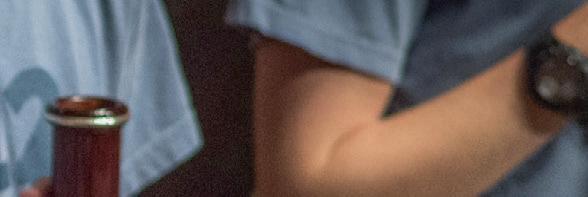











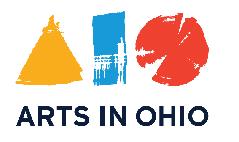
Contemporary Youth Orchestra ROB ER T MULLE R I F YO U’ RE LO OK ING TO create something magical. E P L O R E N L I NE ClevelandArtsEvents .com connects you to the region’s vibrant arts and culture scene With just a few clicks, discover hundreds of events made possible in part with public funding from Cuyahoga Arts & Culture.
Michael Sachs Principal Trumpet
robert and eunice podis weiskopf
chair
MICHAEL SACHS JOINED The Cleveland Orchestra as principal trumpet in 1988. Currently celebrating his 35th season, he is the longest-serving principal trumpet in the Orchestra’s history. During his tenure, he has appeared as a soloist with the Orchestra on 24 different works, including the world premieres of John Williams’s Concerto for Trumpet and Michael Hersch’s Night Pieces for Trumpet and Orchestra (both commissioned by The Cleveland Orchestra for Mr. Sachs), the US and New York premieres of Hans Werner Henze’s Requiem, and the world premiere of Matthias Pintscher’s Chute d’Étoiles at the 2012 Lucerne Festival. Most recently, he performed Hummel’s Trumpet Concerto in E major with the Orchestra in November 2019. His recital of music for trumpet and organ (with organist Todd Wilson) was recorded and released in 2005 by the Musical Arts Association on the album Live from Severance Hall.

Since 2015, Mr. Sachs has served as Music Director of the Strings Music Festival in Steamboat Springs, Colorado. As a co-founder and lead artistic administrator of the National Brass Ensemble, Mr. Sachs performed on the National Brass Ensemble’s 2014 Gabrieli recording project and subsequent concert in Chicago’s Orchestra Hall, in addition to
the 2022 NBE academy, concert, and recording project, Deified, scheduled for release later this year.
Mr. Sachs is head of Cleveland Institute of Music’s trumpet department and regularly presents masterclasses and workshops throughout the US, Europe, and Asia. He is the author of 10 books, including Daily Fundamentals for the Trumpet, 14 Duets for Trumpet and Trombone (with Joseph Alessi), The Orchestral Trumpet, Practice Sequences for The Orchestral Trumpet, as well as newly updated versions of Ernst Sachse’s 100 Transposition Etudes for Trumpet and Wilhelm Wurm’s 120 Etudes for Trumpet.
Michael Sachs was previously a member of the Houston Symphony and a faculty member at Rice University’s Shepherd School of Music. Originally from Santa Monica, California, he attended UCLA, receiving a BA in History before continuing his studies at The Juilliard School.
THE CLEVELAND ORCHESTRA | 21 clevelandorchestra.com THE ARTIST
PHOTO BY ROGER MASTROIANNI
Blo ssom Summer Soirée
SUNDAY, JU LY 23 | BL OS SO M M U SI C CEN TER
A magica l ev eni n g t o bene t e Clevelan d Orchestra’s s um m er home. Learn m or e an d reserv e yo ur tick ets at cle ve landor che stra.co m/ soiree

 Prou d Present in g Sponsor of th e Blosso m Su mm er Soirée
Prou d Present in g Sponsor of th e Blosso m Su mm er Soirée
NOW IN ITS SECOND CENTURY , The Cleveland Orchestra, under the leadership of music director Franz WelserMöst since 2002, is one of the most sought-after performing ensembles in the world. Year after year, the ensemble exemplifies extraordinary artistic excellence, creative programming, and community engagement. The New York Times has called Cleveland “the best in America” for its virtuosity, elegance of sound, variety of color, and chamberlike musical cohesion.
Founded by Adella Prentiss Hughes, the Orchestra performed its inaugural concert in December 1918. By the middle of the century, decades of growth and sustained support had turned it into one of the most admired globally.
The past decade has seen an increasing number of young people attending concerts, bringing fresh attention to The Cleveland Orchestra’s legendary sound and committed programming. More recently, the Orchestra launched several bold digital projects, including the streaming broadcast series In Focus, the podcast On a Personal Note, and its own recording label, a new chapter in the Orchestra’s long and distinguished recording and broadcast history. Together, they have captured the Orchestra’s unique artistry and the musical achievements of the Welser-Möst and Cleveland Orchestra partnership.


The 2022/23 season marks Franz
Welser-Möst’s 21st year as music director, a period in which The Cleveland Orchestra earned unprecedented acclaim around the world, including a series of residencies at the Musikverein in Vienna, the first of its kind by an American orchestra, and a number of acclaimed opera presentations.
Since 1918, seven music directors —
Nikolai Sokoloff, Artur Rodziński, Erich Leinsdorf, George Szell, Lorin Maazel, Christoph von Dohnányi, and Franz Welser-Möst — have guided and shaped the ensemble’s growth and sound. Through concerts at home and on tour, broadcasts, and a catalog of acclaimed recordings, The Cleveland Orchestra is heard today by a growing group of fans around the world.
THE CLEVELAND ORCHESTRA | 23 clevelandorchestra.com
THE CLEVELAND ORCHESTRA
@ClevelandOrchestra @clevelandorchestra @CleveOrchestra @Cleveorch
PHOTO BY ROGER MASTROIANNI
THE CLEVELAND ORCHESTRA

Franz Welser-Möst, MUSIC DIRECTOR
Kelvin Smith Family Chair
FIRST VIOLINS
David Radzynski
CONCERTMASTER
Blossom-Lee Chair
Peter Otto
FIRST ASSOCIATE CONCERTMASTER
Virginia M. Lindseth, PhD, Chair
Jung-Min Amy Lee
ASSOCIATE CONCERTMASTER
Gretchen D. and Ward Smith Chair
Jessica Lee
ASSISTANT CONCERTMASTER
Clara G. and George P. Bickford Chair
Stephen Tavani
ASSISTANT CONCERTMASTER
Wei-Fang Gu
Drs. Paul M. and Renate H.
Duchesneau Chair
Kim Gomez
Elizabeth and Leslie
Kondorossy Chair
Chul-In Park
Harriet T. and David L.
Simon Chair
Miho Hashizume
Theodore Rautenberg Chair
Jeanne Preucil Rose
Larry J.B. and Barbara S. Robinson Chair
Alicia Koelz
Oswald and Phyllis Lerner
Gilroy Chair
Yu Yuan
Patty and John Collinson
Chair
Isabel Trautwein
Trevor and Jennie Jones
Chair
Katherine Bormann
Analisé Denise Kukelhan
Gladys B. Goetz Chair
Zhan Shu
SECOND VIOLINS
Stephen Rose*
Alfred M. and Clara T.
Rankin Chair
Eli Matthews1
Patricia M. Kozerefski and Richard J. Bogomolny
Chair
Sonja Braaten Molloy
Carolyn Gadiel Warner
Elayna Duitman
Ioana Missits
Jeffrey Zehngut
Sae Shiragami
Kathleen Collins
Beth Woodside
Emma Shook
Dr. Jeanette Grasselli
Brown and Dr. Glenn R.
Brown Chair
Yun-Ting Lee
Jiah Chung Chapdelaine
VIOLAS
Wesley Collins*
Chaillé H. and Richard B.
Tullis Chair
Lynne Ramsey1
Charles M. and Janet G.
Kimball Chair
Stanley Konopka2
Mark Jackobs
Jean Wall Bennett Chair
Lisa Boyko
Richard and Nancy
Sneed Chair
Richard Waugh
Lembi Veskimets
The Morgan Sisters Chair
Eliesha Nelson
Joanna Patterson Zakany
William Bender
Gareth Zehngut
CELLOS
Mark Kosower*
Louis D. Beaumont Chair
Richard Weiss1
The GAR Foundation Chair
Charles Bernard2
Helen Weil Ross Chair
Bryan Dumm
Muriel and Noah Butkin
Chair
Tanya Ell
Thomas J. and Judith Fay
Gruber Chair
Ralph Curry
Brian Thornton
William P. Blair III Chair
David Alan Harrell
Martha Baldwin
Dane Johansen
Paul Kushious
BASSES
Maximilian Dimoff*
Clarence T. Reinberger
Chair
Derek Zadinsky2
Charles Paul1
Mary E. and F. Joseph Callahan Chair
Mark Atherton
Thomas Sperl
Henry Peyrebrune
Charles Barr Memorial Chair
Charles Carleton
Scott Dixon
HARP
Trina Struble*
Alice Chalifoux Chair
FLUTES
Joshua Smith*
Elizabeth M. and William C. Treuhaft Chair
Saeran St. Christopher
Jessica Sindell2
Austin B. and Ellen W.
Chinn Chair
Mary Kay Fink
PICCOLO
Mary Kay Fink
Anne M. and M. Roger Clapp Chair
OBOES
Frank Rosenwein*
Edith S. Taplin Chair
Corbin Stair
Sharon and Yoash Wiener Chair
Jeffrey Rathbun2
Everett D. and Eugenia S.
McCurdy Chair
Robert Walters
ENGLISH HORN
Robert Walters
Samuel C. and Bernette K. Jaffe Chair
CLARINETS
Afendi Yusuf*
Robert Marcellus Chair
Robert Woolfrey
Victoire G. and Alfred M. Rankin, Jr. Chair
Daniel McKelway2
Robert R. and Vilma L.
Kohn Chair
Amy Zoloto
E-FLAT CLARINET
Daniel McKelway
Stanley L. and Eloise M. Morgan Chair
BASS CLARINET
Amy Zoloto
Myrna and James Spira Chair
BASSOONS
John Clouser*
Louise Harkness Ingalls Chair
Gareth Thomas
Barrick Stees2
Sandra L. Haslinger Chair
Jonathan Sherwin
CONTRABASSOON
Jonathan Sherwin
HORNS
Nathaniel Silberschlag*
George Szell Memorial Chair
24 | 2022/2023 SEASON
Michael Mayhew§ Knight Foundation Chair
Jesse McCormick
Robert B. Benyo Chair
Hans Clebsch
Richard King
TRUMPETS
Michael Sachs* Robert and Eunice Podis
Weiskopf Chair
Jack Sutte
Lyle Steelman2
James P. and Dolores D. Storer Chair
Michael Miller
CORNETS
Michael Sachs*
Mary Elizabeth and G. Robert Klein Chair
Michael Miller
TROMBONES
Brian Wendel*
Gilbert W. and Louise I. Humphrey Chair
Richard Stout Alexander and Marianna C. McAfee Chair
Shachar Israel2
EUPHONIUM & BASS TRUMPET
Richard Stout
TUBA
Yasuhito Sugiyama*
Nathalie C. Spence and Nathalie S. Boswell Chair
TIMPANI
Paul Yancich*
Otto G. and Corinne T. Voss Chair
PERCUSSION
Marc Damoulakis*
Margaret Allen Ireland Chair
Donald Miller
Thomas Sherwood
KEYBOARD INSTRUMENTS
Carolyn Gadiel Warner
Marjory and Marc L. Swartzbaugh Chair
LIBRARIANS
Michael Ferraguto
Joe and Marlene Toot Chair
Donald Miller
ENDOWED CHAIRS
CURRENTLY UNOCCUPIED
Elizabeth Ring and William
Gwinn Mather Chair
Paul and Lucille Jones Chair
James and Donna Reid Chair
Sunshine Chair
Mr. and Mrs. Richard K.
Smucker Chair
Rudolf Serkin Chair
CONDUCTORS
Christoph von Dohnányi MUSIC DIRECTOR
LAUREATE
Daniel Reith
ASSISTANT CONDUCTOR
Sidney and Doris Dworkin Chair
Lisa Wong
DIRECTOR OF CHORUSES
Frances P. and Chester C. Bolton Chair
* Principal
§ Associate Principal
1 First Assistant Principal
2 Assistant Principal
This roster lists full-time members of The Cleveland Orchestra. The number and seating of musicians onstage varies depending on the piece being performed. Seating within the string sections rotates on a periodic basis.
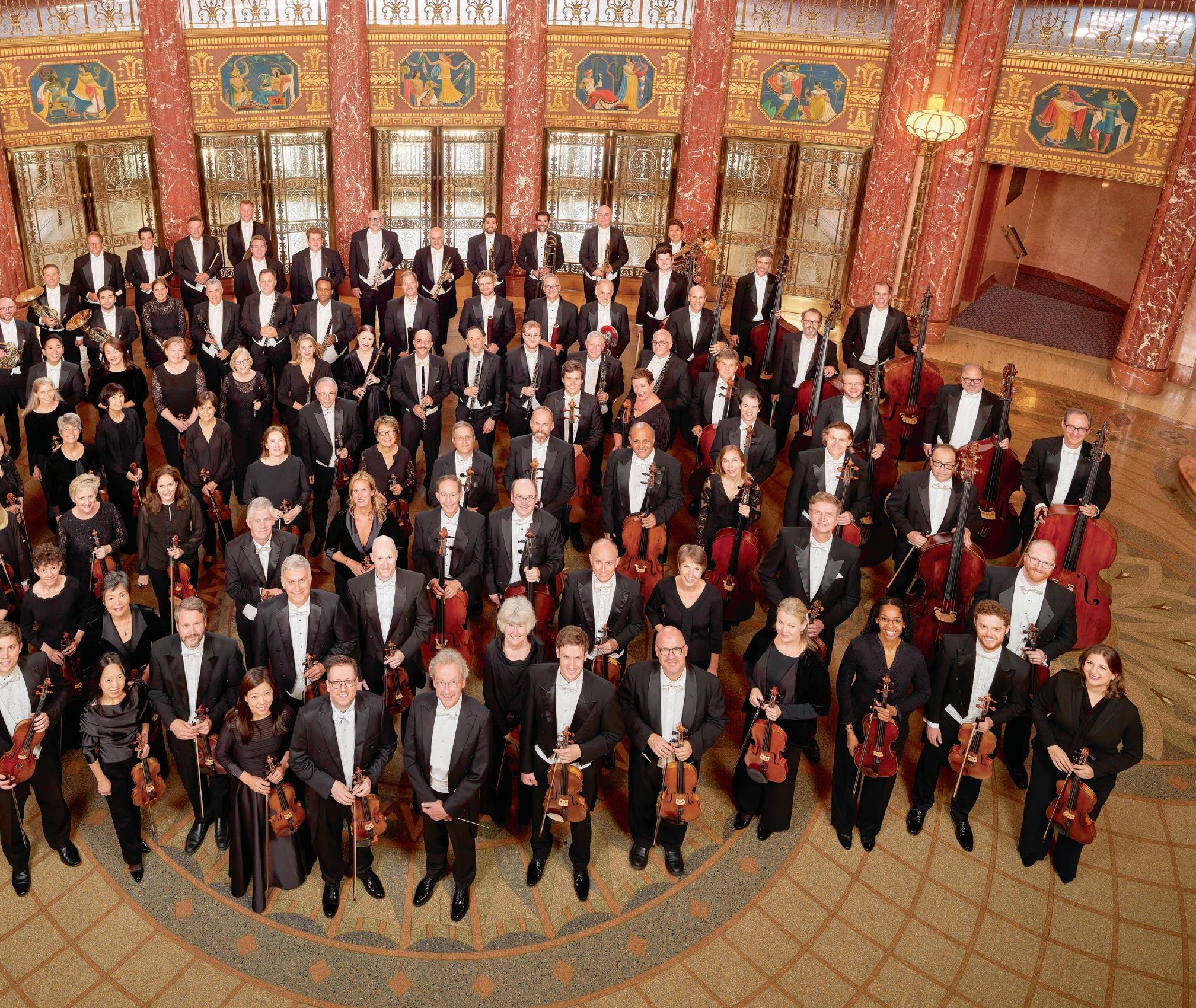
THE CLEVELAND ORCHESTRA | 25 clevelandorchestra.com
PHOTO BY ROGER MASTROIANNI
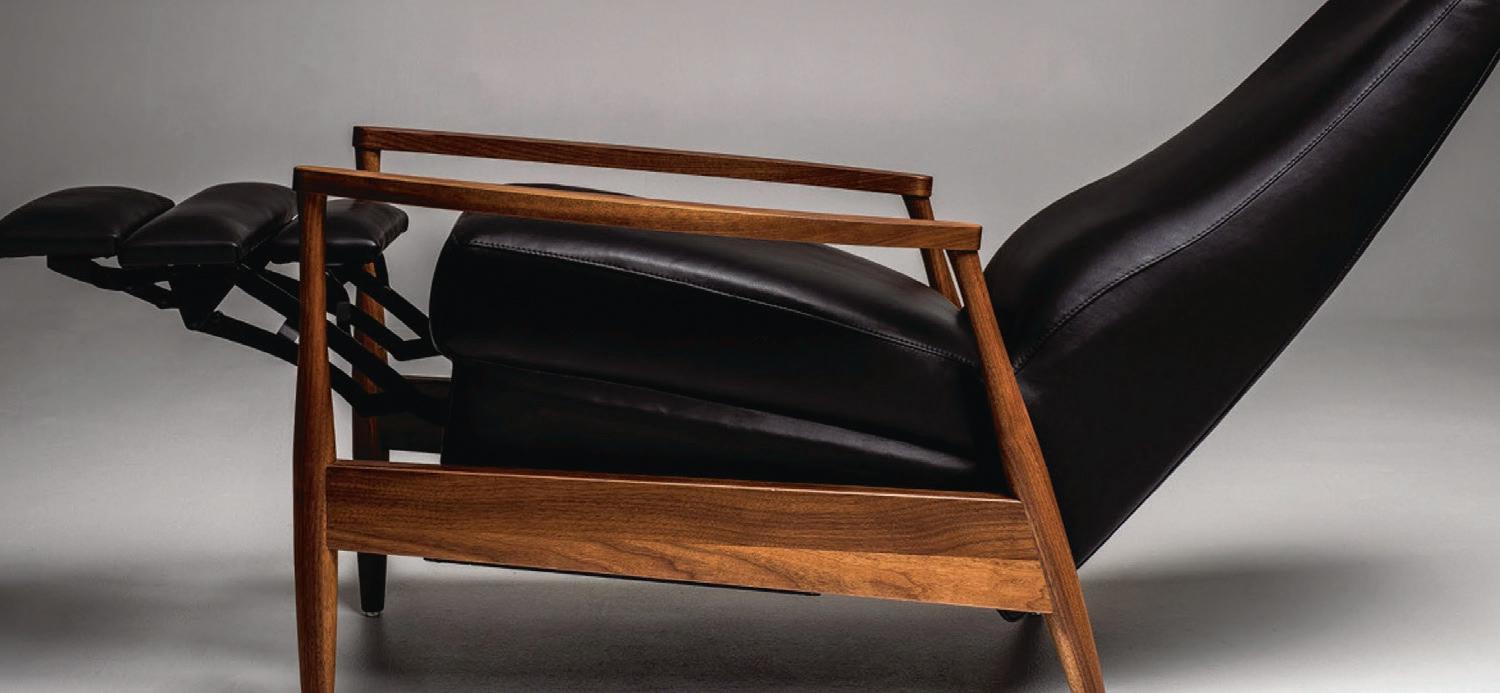


With a 100,000 sq. ft. showroom and 27 galleries, we’re sure you’ll find more than enough room. Need More Leg Room? 34300 Solon Road | Solon, OH | 440-248-2424 | 800-260-2949 One block south of Rt. 422 & SOM Center Road 9-9 M/Th | 9-5:30 Tu/W/F/Sa | www.sedlakinteriors.com Complimentary Delivery and Set-Up Within 60 Miles. CELEBRATING
A FESTIVAL OF CONCERTS, CONVERSATIONS & IDEAS
FESTIVAL CONCERTS & KEYNOTE
MAY 11
FRAGMENTS 1
Alisa Weilerstein,
MAY 13
KEYNOTE SPEAKER ISABEL WILKERSON
MAY 14, 17 & 20
PUCCINI’S OPERA IN CONCERT
THE GIRL OF THE GOLDEN WEST

The Cleveland Orchestra
Franz Welser-Möst, conductor
Tamara Wilson, soprano (Minnie)
Roman Burdenko, bass (Jack Rance)
Limmie Pulliam, tenor (Dick Johnson)
Cleveland Orchestra Chorus
MAY 19
DREAMS WE’VE DREAMED; SONGS WE’VE SUNG; HOPES WE’VE HELD
The Cleveland Orchestra
















































Franz Welser-Möst, conductor
FREE EVENTS
MAY 13
UNITED IN SONG!
A COMMUNITY CHORAL CELEBRATION
MAY 18
THE AMERICAN DREAM, THE AMERICAN NIGHTMARE, AND BLACK AMERICAN MUSIC
MAY 20
EXAMINING THE AMERICAN DREAM
MAY 11–20
SEVERANCE MUSIC CENTER
Scan the QR code for more festival information & details.

HEALTH & SAFETY
The Cleveland Orchestra is committed to creating a comfortable, enjoyable, and safe environment for all guests at Severance Music Center. While mask and COVID-19 vaccination are recommended they are not required. Protocols are reviewed regularly with the assistance of our Cleveland Clinic partners; for up-to-date information, visit: clevelandorchestra. com/attend/health-safety
LATE SEATING
As a courtesy to the audience members and musicians in the hall, late-arriving patrons are asked to wait quietly until the first convenient break in the program. These seating breaks are at the discretion of the House Manager in consultation with the performing artists.
PAGERS, CELL PHONES & WRISTWATCH ALARMS
As a courtesy to others, please silence all devices prior to the start of the concert.
PHOTOGRAPHY, VIDEOGRAPHY & RECORDING
Audio recording, photography, and videography are prohibited during performances at Severance. Photographs can only be taken when the performance is not in progress.
HEARING AIDS & OTHER HEALTH-ASSISTIVE DEVICES
For the comfort of those around you, please reduce the volume on hearing aids and other devices that may produce a noise that would detract from the program. For Infrared Assistive-Listening Devices, please see the House Manager or Head Usher for more details.
FREE MOBILE APP TICKET WALLET
IN THE EVENT OF AN EMERGENCY
Contact an usher or a member of house staff if you require medical assistance. Emergency exits are clearly marked throughout the building. Ushers and house staff will provide instructions in the event of an emergency.
AGE RESTRICTIONS
Regardless of age, each person must have a ticket and be able to sit quietly in a seat throughout the performance. Classical season subscription concerts are not recommended for children under the age of 8. However, there are several age-appropriate series designed specifically for children and youth, including Music Explorers (for 3 to 6 years old) and Family Concerts (for ages 7 and older).
The Cleveland Orchestra is grateful to the following organizations for their ongoing generous support of The Cleveland Orchestra: the State of Ohio and Ohio Arts Council and to the residents of Cuyahoga County through Cuyahoga Arts and Culture.
For more information and direct links to download, visit clevelandorchestra.com/ticketwallet or scan the code with your smartphone camera to download the app for iPhone or Android.
Available for iOS and Android on Google Play and at the Apple App Store.
The Cleveland Orchestra is proud of its long-term partnership with Kent State University, made possible in part through generous funding from the State of Ohio. The Cleveland Orchestra is proud to have its home, Severance Music Center, located on the campus of Case Western Reserve University, with whom it has a long history of collaboration and partnership.
© 2023 The Cleveland Orchestra and the Musical Arts Association
Program books for Cleveland Orchestra concerts are produced by The Cleveland Orchestra and are distributed free to attending audience members.
EDITORIAL
Amanda Angel, Program Editor, Managing Editor of Content aangel@clevelandorchestra.com
Kevin McBrien, Editorial Assistant
DESIGN
Elizabeth Eddins, eddinsdesign.com
ADVERTISING
Live Publishing Company, 216-721-1800
28 | 2022/2023 SEASON
YOUR VISIT
Download today for instant, secure and paperless access to your concert tickets.
clevelandorchestra.com Cleveland Orchestra performances are broadcast as part of regular programming on ideastream/WCLV Classical 90.3 FM, Saturdays at 8 p.m. and Sundays at 4 p.m.

Open now | Tickets at cma.org | CMA Members FREE
Henry VIII, “Bloody Mary,” and Elizabeth “The Virgin Queen” as you immerse yourself in the opulence and drama of the Tudor reign. Featuring iconic portraits, intricately wrought armor, glittering tapestries woven with gold and more, this fascinating exhibition explores the magnificent art that fostered a dynasty.
Kind.
AND M AJESTY IN RENAISSANCE ENGLAND
E
U D O R S
Meet
Guess I’m Just The Marrying
ART
TH
T
RENAISSANCE ENGLAND TH E
O R S
ART AND M AJESTY IN
TUD
RENAISSANCE ENGLAND
O R S Henry VIII (detail), c. 1537. Workshop of Hans Holbein the Younger. Oil on panel; 239 x 134.5 cm. National Museums Liverpool, Walker Art Gallery, Purchased by the Walker Art Gallery in 1945, WAG 1350 cma.org
ART AND M AJESTY IN
TH E TUD
A SYMPHONY OFSuccess

We believe that all Cleveland youth should have access to high-quality arts education. Through the generosity of our donors, we are investing to scale up neighborhoodbased programs that now serve 3,000 youth year-round in music, dance, theater, photography, literary arts and curatorial mastery. That’s a symphony of success. Find your passion, and partner with the Cleveland Foundation to make your greatest charitable impact.
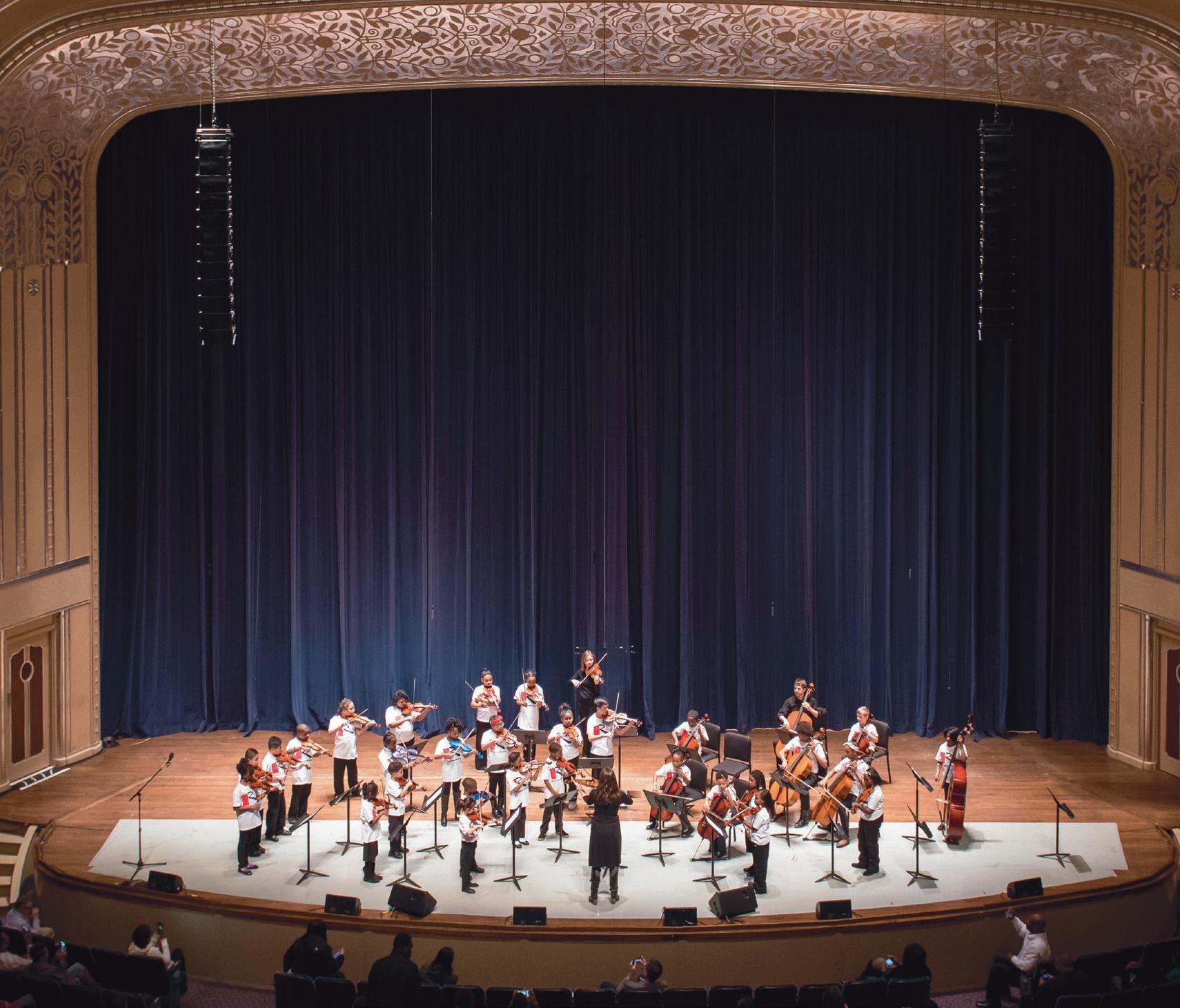
(877)554-5054
w ww.ClevelandFoundation.org
Institute El Sistema Orchestra
Rainey











































 PHOTO BY ROGER MASTROIANNI
Franz Welser-Möst Music Director
PHOTO BY ROGER MASTROIANNI
Franz Welser-Möst Music Director
































 Prou d Present in g Sponsor of th e Blosso m Su mm er Soirée
Prou d Present in g Sponsor of th e Blosso m Su mm er Soirée

























